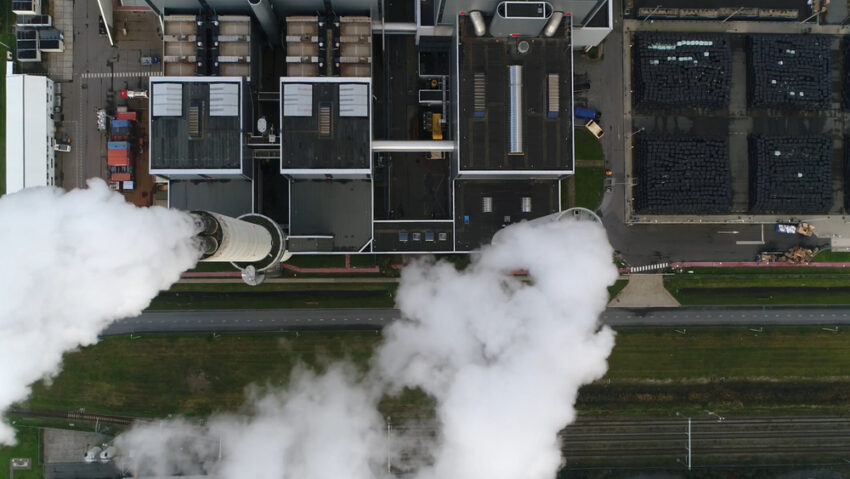
A gas-fired power station and plants making low-carbon hydrogen will be among Britain’s first projects to capture their carbon emissions under plans unveiled by the government yesterday.
A cement works, a lime plant and energy-from-waste projects were also among eight winning carbon capture and storage schemes across Teesside, the northwest and north Wales that have been fast-tracked for formal funding negotiations.
The eight are expected to share in a promised carbon capture funding package of up to £20 billion over two decades, comprising support from taxpayers and energy bill-payers.
The government also advanced its ambitions for the production of clean-burning hydrogen through the selection of 35 projects allocated grant funding or shortlisted for a funding package. The majority of these were electrolysers, able to produce zero-carbon “green” hydrogen using renewable power.
BP, led by Bernard Looney, emerged as one of the big winners with three projects selected for funding, including Britain’s first carbon capture and storage power plant on Teesside, which could produce enough electricity to power 1.3 million homes a year. The government also selected BP-led projects to make low-carbon hydrogen from natural gas with carbon capture and storage, known as “blue” hydrogen, and green hydrogen using electrolysis, both on Teesside.
Other carbon capture and storage winners included Essar’s proposed blue hydrogen plant at the site of its refinery at Ellesmere Port on the Wirral.
Proposed carbon capture and storage projects in the Humber region missed out and projects in Scotland were left waiting for clarity, in a blow for companies including SSE, the energy group.
Ruth Herbert, chief executive at the Carbon Capture and Storage Association, said: “Collectively, these projects will capture millions of tonnes of carbon dioxide a year and protect and create thousands of jobs in critical sectors, delivering significant economic growth in two of the UK’s industrial regions. However, this announcement will be particularly disappointing for the Humber region, which emits more CO2 than any region in the UK: projects based there urgently need clarity, alongside other unsuccessful projects.”
Carbon capture is a crucial part of Britain’s decarbonisation plans. The technology traps CO2 as it is produced at manufacturing sites or power plants and then either uses it or stores the carbon permanently under the seabed.
The government wants two carbon capture and storage “clusters” operating by the mid-2020s and two more by 2030, by which point it hopes to be capturing 20 million to 30 million tonnes of CO2 a year, equivalent to the annual emissions from 10 million to 15 million cars.
Two clusters are already fast-tracked: the East Coast Cluster, which plans to capture emissions from the northeast and store them in a saline aquifer in the North Sea; and HyNet, which aims to capture emissions from the northwest and north Wales and to store them in disused gasfields under the Irish Sea.
Yesterday brought the long-awaited government decision on which carbon-emitting projects within these clusters would be fast-tracked for funding to install capture technology and feed emissions into the planned storage sites. The eight winning projects will now begin formal funding negotiations with the government with the hope of getting shovels in the ground by next year.
The East Coast Cluster intends to capture emissions from both Teesside and the Humber, but the government selected only emitter projects in Teesside for fast-tracking.
Henri Murison, chief executive of the Northern Powerhouse Partnership, which represents business leaders in the north, said: “We’re at a loss to see why the Humber has missed out entirely. This decision raises serious concerns about whether the government is playing political games — divide and rule — instead of doing what is right for the economy and … decarbonisation.”
The government promised to launch a process this year to “bring in further projects within the Track-1 clusters by 2030”, which would select additional emitters — including those from the Humber area — feeding into the East Coast Cluster.
It also started a process to select the next two clusters and said its initial view was that the “leading contenders” were the Acorn project in Scotland and the Viking project, a separate proposed cluster elsewhere in the Humber. Acorn has been selected as a “reserve” Track-1 cluster and there was disappointment in Scotland that it was not promoted to the fast track yesterday.
SSE wants to build a gas power plant with carbon capture and storage at Keadby in the Humber and said its project was the only proposed carbon capture and storage power plant to have planning consent. The company is also involved in the proposed Scottish cluster.
As well as BP and Essar’s proposed blue hydrogen plants, the government also selected a BOC project to retrofit carbon capture to an existing hydrogen production plant on Teesside.
In addition, 15 projects including several green hydrogen electrolysers will share £38 million of grant funding from the £240 million Net Zero Hydrogen Fund, and a further 20 electrolyser projects have been shortlisted for due diligence for future funding.